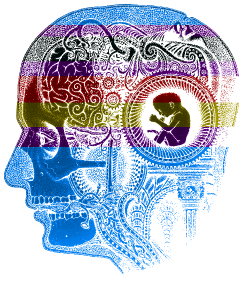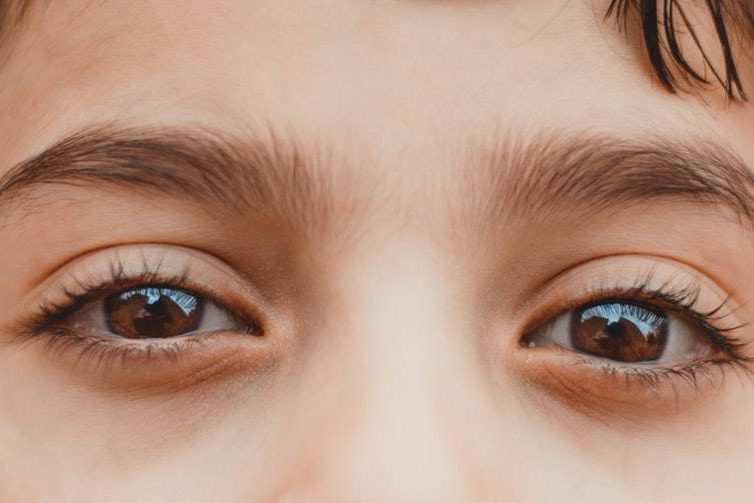Attachment is the formation of a trusting bond with someone. The most important aspect of an intimate, dyadic relationship is an attachment bond. At birth, this is created through interaction with parents (or primary caregivers). The quality of early relationship bonding can predict our capacity for forming future attachments.
Developmental attachment trauma describes unpleasant thoughts and unhealthy bonding patterns that may have developed after exposure to traumatic past relationships. Though not limited to it, an inept relationship with primary caretakers during childhood is a prevalent cause of relationship problems in adulthood and a consistent symptom of post-traumatic stress disorder.
Humans have strong herd instincts and are intensely dependent on social security and cooperation.
To ensure an orderly and safe environment, communities set norms and guidelines which they expect all members to embrace. Failure to conform to these societal standards may lead to retribution and we are forced to start learning and implementing it at an early stage in life.
Among our more refined survival instincts is the formation of intimate relationship bonds based on trust. At birth, we are incapable of performing all the acts required for survival, so we instinctively rely on our primary caretakers to nurture and protect us.
Due to this intimacy, we form potent emotional bonds with them. Consequently, our primary caretakers strongly influence our social adaptations during childhood development.
Infants proclaim their basic needs instinctively by crying, but more advanced social integration skills are required and developed during the ensuing growth process. Due to inexperience, limited control over the situation, and the time it takes to attain a reasonable level of competence, children are vulnerable to inappropriate early influences and maladaptations to these influences can last through their lifetime as their early childhood is their base “programming language” from which they operate the rest of their lives.
During the developmental growth phase, children take instruction from primary caretakers, but also observe other people and develop a sense of what society expects of them. They evaluate their situations by comparing the behaviour of their caretakers with the “norms of society”. If there are deviations in the principles, and if their caretakers ignore it, they cope with it by adapting to their own strategies and “norms”.
Apart from their evaluation of the situation, children exposed to elements or combinations of abuse, neglect or abandonment, always develop an intrinsic range of unhealthy responses to fill voids left by caretakers who are unable to present themselves as adequate role models.
Children can maintain these maladaptive patterns and echo circumstances of their childhood environments into their adulthood. To compensate for the absence of bonding in childhood, they can subconsciously long for these connections as an adult, but due to their legacy of poor care, they may find it difficult to reciprocate intimacy or form significant bonds or establish healthy relationships.
Someone who never experienced relationship comfort feels insecure.
Anxiety can trigger irrational outbursts alternating between hostility, affection and sometimes unfounded guilt or unsettling emotions like simply not “fitting in” or feeling on the outside. These shifts between abuse and protection can also generate deeper feelings of confusion and not knowing how to handle seemingly normal life circumstances.
It is caused by a dual-threat comprised of an urge to deflect emotional vulnerability and a contradictory fear of the other person abandoning them.
Relationships with secure adult partners can help to enhance the emotional healing of insecure partners.
Paradoxically, insecure people tend to seek insecure partners.
In the likely event of either insecure partner faltering, the attachment bond is compromised and it results in withdrawal, clinging or hyper-vigilance (dismissive, fearful or preoccupied behaviour).
Reactive Attachment Disorder (RAD) is another clinically recognized term for insecure attachment. Children with RAD can not attach to caregivers or form normal relationship bonds. They have often been maltreated or separated from caretakers and can be misdiagnosed and unsuccessfully treated if not expertly evaluated.
When someone is maltreated, they can become silently attached, adapting to it by retaining their affection for the other person, but avoiding closeness. Helpers may want to separate them, but this can create the dilemma of causing more damage than remaining with the person would. The solution is to obtain a psychiatric evaluation before separation is considered.

Treatment for attachment trauma
Developmental trauma is difficult to overcome, however modern treatment centres with dynamic, unique, multi-faceted treatment techniques may help the condition. Poor bonding does not automatically imply that a parent is “responsible” however in so many circumstances parents themselves, are the unconscious victims of inherited traumas which perpetuate maladaptive behaviours through subsequent generations.
Please Note : Self-diagnosis and recuperation strategies formed on data gleaned from the web and random resources can possibly be mistaken. If you think you may be suffering from a mental health issue, always seek advice from a qualified psychologist for individual insights appropriate to your circumstances.







